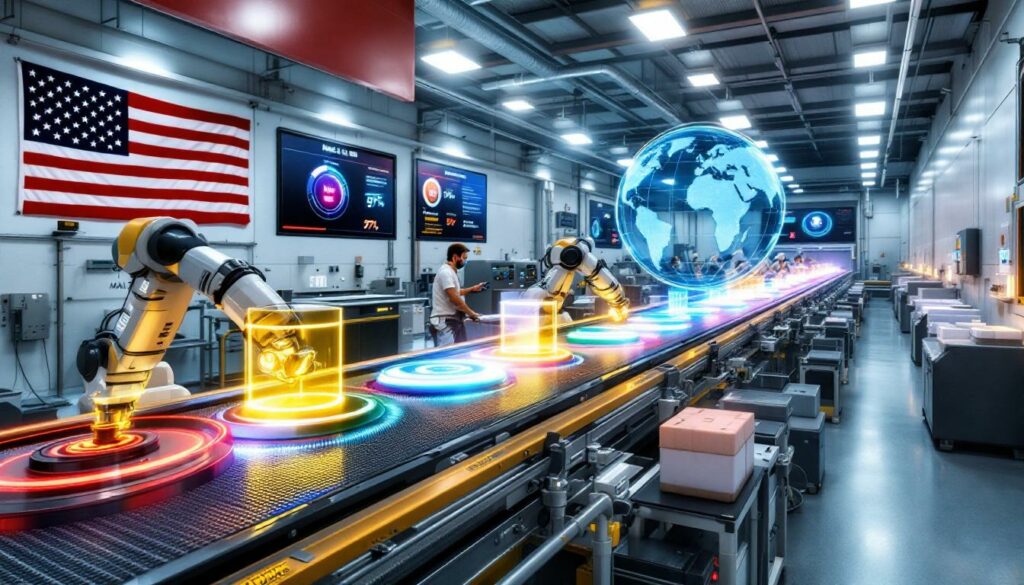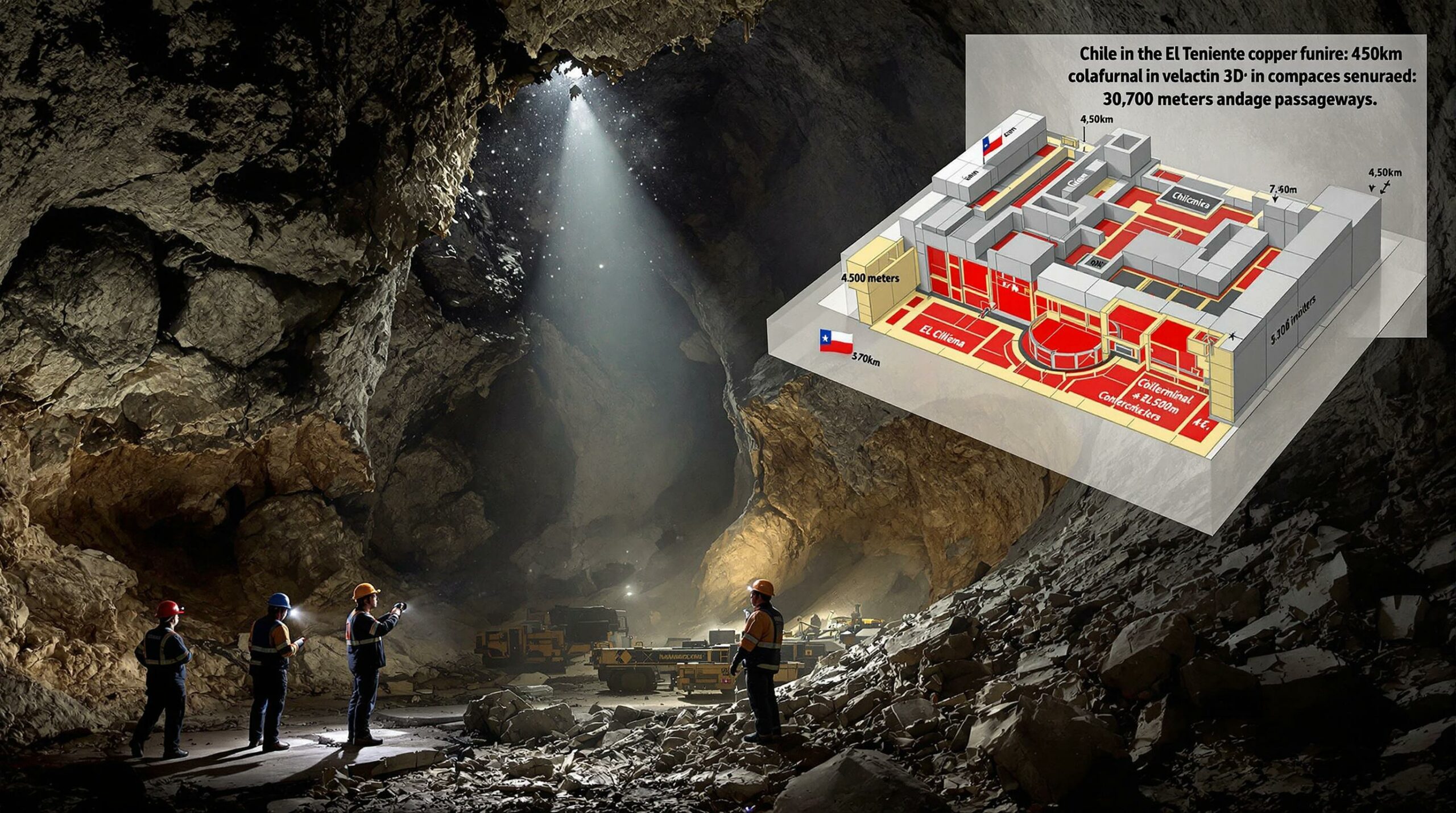Revolutionizing Battery Recycling: The U.S. Circular Economy and PNE's South Carolina Facility
The U.S. battery circular economy and PNE's South Carolina flagship recycling facility represents a transformative approach to resource management, addressing environmental concerns while establishing secure domestic supply chains for critical materials. As electric vehicles and renewable energy storage become increasingly vital to America's energy future, the ability to recover and reuse battery materials has emerged as a strategic priority with far-reaching implications.
What is the Battery Circular Economy?
Understanding the Closed-Loop Battery Ecosystem
The battery circular economy represents a sustainable approach to managing the complete lifecycle of batteries—from manufacturing to end-of-life processing. Rather than following the traditional linear model of "take-make-dispose," this closed-loop system focuses on recovering valuable materials from spent batteries and manufacturing scrap to create new battery components.
This system significantly reduces dependence on newly mined raw materials, addressing both environmental concerns and supply chain vulnerabilities. By keeping materials in productive use for longer periods, the circular economy maximizes resource efficiency while minimizing waste.
"In Chester, we demonstrate that the United States can lead in battery materials recovery and manufacturing — not years from now, but today," notes Dr. Chao Yan, Co-Founder and CEO of Princeton NuEnergy (PNE), highlighting the immediate practicality of this approach.
Key Components of a Circular Battery Economy
A fully functioning battery circular economy relies on several interconnected systems:
- Collection infrastructure for gathering end-of-life batteries and manufacturing waste
- Sorting facilities capable of distinguishing between different battery chemistries
- Advanced recycling technologies that maximize material recovery rates
- Refining processes that convert recovered materials into battery-grade inputs
- Manufacturing capabilities that successfully reintegrate recycled materials
This integrated ecosystem requires coordination between battery manufacturers, recyclers, material processors, and end-users to function effectively. Each component plays a critical role in ensuring materials maintain their highest utility and value throughout multiple lifecycles.
Why is Battery Recycling Critical for the United States?
Reducing Dependency on Foreign Material Sources
The United States faces significant challenges regarding battery material supply security. Most critical minerals used in battery production—including lithium, cobalt, nickel, and manganese—come predominantly from overseas sources, creating potential vulnerabilities in supply chains essential to energy transition.
Battery recycling provides a domestic alternative by recovering these same materials from batteries already in the country. This "urban mining" approach transforms waste streams into valuable material sources, reducing reliance on international suppliers that may be subject to geopolitical tensions or market volatility.
As Dr. Yan explains, "United States policy is focused on creating a secure domestic energy production and supply chain, and PNE is at the forefront with our best-in-class technology and manufacturing processes." This alignment with national priorities highlights recycling's strategic importance beyond its environmental benefits.
Environmental Benefits of Battery Recycling
The environmental case for battery recycling is compelling on multiple fronts:
- Waste reduction prevents hazardous materials from contaminating landfills
- Resource conservation extends the useful life of critical minerals
- Energy savings compared to primary extraction and processing
- Land preservation by reducing the need for expanded mining operations
- Water conservation through closed-loop processing systems
While precise environmental impact measurements require comprehensive life-cycle assessments, the general principle remains clear: recovering materials from existing batteries typically requires significantly less energy and produces fewer emissions than extracting and processing virgin materials. Recent Chinese battery recycling breakthrough developments have further highlighted the global advancements in this field.
Economic Opportunities in the Recycling Sector
Beyond environmental and security benefits, the battery recycling industry represents a significant economic opportunity for the United States. As domestic battery manufacturing capacity expands—driven by electric vehicle production and renewable energy storage deployment—recycling operations offer complementary growth potential.
The sector creates high-skilled manufacturing jobs in materials processing, chemical engineering, and advanced manufacturing. These positions support both immediate employment and long-term workforce development in technologies essential to the clean energy transition.
Additionally, localizing material recovery reduces transportation costs and market volatility for battery manufacturers, potentially improving cost competitiveness of American-made energy storage products. Furthermore, ongoing battery recycling process developments continue to improve efficiency and cost-effectiveness across the industry.
How Does PNE's South Carolina Facility Transform the U.S. Battery Landscape?
First Commercial-Scale Advanced Black Mass Facility in the U.S.
Princeton NuEnergy's flagship facility in Chester, South Carolina represents a significant milestone in America's battery recycling capabilities. As the "nation's first commercial-scale Advanced Black Mass and battery-grade cathode active material production facility", it demonstrates that domestic processing of battery materials has moved beyond theoretical potential to practical reality.
The facility features:
- Current capacity of 5,000 tons per annum (tpa)
- Planned expansion to 15,000 tpa by 2026
- Scalable design allowing growth to 50,000 tpa as market demand increases
- Multi-chemistry capabilities for both NCM and LFP battery materials
- Full environmental compliance with all U.S. and state standards
This scalable approach allows PNE to match processing capacity with growing battery waste volumes as electric vehicle adoption accelerates and the first generation of grid storage systems reaches end-of-life.
Technological Innovations at the Chester Facility
PNE's South Carolina operation leverages proprietary advanced recycling processes that achieve recovery yields exceeding 97%—significantly surpassing typical industry recovery rates. This efficiency maximizes the economic value extracted from each ton of battery waste while minimizing residual materials requiring disposal.
The facility produces Advanced Black Mass (ABM™), a consistent, high-purity precursor material that can be used in new battery production. This intermediate product contains the valuable cathode metals (lithium, nickel, cobalt, manganese) in forms suitable for further refining into battery-grade materials.
Operations adhere to strict Standard Operating Procedures (SOPs) that ensure worker safety, environmental protection, and product quality throughout the recycling process. These protocols reflect both regulatory requirements and best practices for handling potentially hazardous materials.
Strategic Significance for U.S. Battery Manufacturing
The Chester facility demonstrates immediate U.S. capability in advanced battery materials recovery at commercial scale, challenging the notion that such technologies require years of development before practical implementation. By producing battery-grade materials domestically, it addresses a critical gap in America's battery supply chain.
"Our team's execution has been exceptional, and this facility is our next major advancement in the battery supply chain space," states Dr. Yan, highlighting how the operation fits into broader national efforts to establish end-to-end domestic capabilities for battery production.
The facility provides a working model for future recycling operations across the country, potentially accelerating industry development through demonstrated success rather than theoretical potential alone.
What Makes PNE's Approach to Battery Recycling Unique?
Direct Recycling Technology Advantages
PNE employs advanced recycling processes that preserve more of the structural integrity and value of battery materials compared to conventional methods. Traditional recycling often relies on energy-intensive pyrometallurgical processes (high-temperature smelting) that destroy the chemical structures of battery components to recover base metals.
By contrast, direct recycling approaches aim to recover cathode materials with minimal structural degradation, potentially requiring less energy while producing higher-quality outputs. This approach can yield materials suitable for immediate reintroduction into battery production with fewer intermediate processing steps.
The Chester facility's exceptional recovery yield (exceeding 97%) demonstrates the effectiveness of these advanced methods in maximizing material utilization while minimizing waste streams. The development of an innovative battery recycling facility like this follows a global trend toward more efficient and effective recycling solutions.
Multi-Chemistry Capabilities
A significant technical challenge in battery recycling involves handling different chemical formulations as battery technologies evolve. PNE's South Carolina facility specifically addresses this challenge by processing both:
- NCM (nickel-cobalt-manganese) batteries commonly used in electric vehicles
- LFP (lithium iron phosphate) batteries increasingly adopted for energy storage and some EV applications
This multi-chemistry capability provides critical flexibility as manufacturers shift between different cathode formulations based on performance requirements, material availability, and cost considerations. Rather than requiring separate facilities for each chemistry, PNE's approach allows adaptation to changing market conditions and technology trends.
Comprehensive Quality Control Systems
Maintaining consistent output quality from variable input materials represents one of the greatest challenges in recycling operations. PNE addresses this through comprehensive quality control systems that include:
- Material traceability throughout the recycling process
- Rigorous testing protocols to ensure consistent output specifications
- Third-party validation capabilities through their Princeton Materials Testing Center
- Downstream application testing to verify material performance in actual battery cells
These quality assurance measures help bridge the gap between recycled and virgin materials by demonstrating that recovered materials can meet the stringent requirements of battery manufacturers.
How is PNE Building a National Battery Recycling Network?
Strategic Facility Locations Across the U.S.
PNE has established a strategic presence across the United States with facilities serving complementary functions in the battery recycling ecosystem:
- Chester, South Carolina: Flagship commercial-scale production facility
- McKinney, Texas: Joint pilot facility advancing direct recycling technologies
- Princeton, New Jersey: Materials Testing Center described as "largest in the U.S. northeast"
This distributed approach allows PNE to establish regional capabilities aligned with battery manufacturing hubs while maintaining centralized technology development and quality control functions. The geographic diversity also reduces transportation requirements for battery waste materials, which can face regulatory challenges when shipped long distances.
Partnerships Enhancing the Recycling Ecosystem
Effective battery recycling requires coordination across multiple industry segments, from battery manufacturers to material processors to end users. While specific partnership details aren't fully documented in available sources, PNE's multi-location approach suggests collaboration with various stakeholders in the battery value chain.
The McKinney, Texas facility, described as a "joint pilot facility," indicates collaborative technology development with partners, while the Princeton Materials Testing Center suggests capabilities for third-party validation that would support broader industry relationships.
Expanding these partnerships will be essential to establishing reliable feedstock sources from manufacturing scrap, developing efficient collection systems for end-of-life batteries, and creating consistent markets for recovered materials.
Future Expansion Plans
PNE's Chester facility demonstrates a phased growth strategy:
- Starting with 5,000 tpa initial capacity
- Expanding to 15,000 tpa by 2026
- Scaling to 50,000 tpa as market demand increases
This incremental approach allows for capacity expansion timed to match growing battery waste volumes while managing capital requirements efficiently. The 10-fold range between initial and potential capacity highlights the anticipated growth in recyclable battery materials as electric vehicle adoption accelerates.
Similar expansion capabilities at other facilities would create a networked infrastructure capable of handling increasing volumes and varieties of battery materials as the clean energy transition progresses.
What Challenges Face the U.S. Battery Recycling Industry?
Collection and Logistics Hurdles
One of the most significant barriers to effective battery recycling involves the collection and transportation of end-of-life batteries. Unlike consumer electronics, EV batteries are large, heavy components that may require specialized handling, particularly if damaged.
Key challenges include:
- Developing efficient collection networks for diverse battery types
- Navigating transportation regulations for potentially hazardous materials
- Managing batteries of varying states of charge and degradation
- Establishing standardized disassembly protocols for different vehicle designs
- Creating tracking systems to monitor battery chain-of-custody
These logistical considerations become increasingly important as battery volumes grow, requiring infrastructure development to match recycling processing capacity.
Technical Processing Challenges
Battery recycling faces several technical hurdles that facilities like PNE's must overcome:
- Design variation: Different manufacturers use proprietary battery designs
- Chemistry evolution: New formulations continuously enter the market
- Material segregation: Separating high-value components from housing materials
- Contaminant management: Handling electrolytes and other potentially hazardous substances
- Quality consistency: Producing battery-grade outputs from variable inputs
PNE's achievement of 97% recovery rates demonstrates progress in addressing these challenges, but continued innovation will be needed as battery technologies evolve.
Market and Economic Considerations
Even with technical capabilities in place, recycling operations must navigate complex market dynamics:
- Fluctuating prices for recovered materials affecting profitability
- Competition with primary materials on cost and quality specifications
- Establishing reliable supply agreements with battery manufacturers
- Securing investment for capital-intensive recycling infrastructure
The capital requirements for facilities like PNE's Chester operation are substantial, requiring confidence in long-term market demand for recycled materials and supportive policy frameworks. However, the industry is increasingly finding ways to implement effective mining waste management solutions that complement battery recycling efforts.
How Does Battery Recycling Support U.S. Climate Goals?
Reducing Carbon Footprint of Battery Production
Battery recycling contributes to climate goals primarily by reducing the energy and emissions associated with material production. While specific carbon reduction figures require comprehensive life-cycle assessment, recycled materials typically require significantly less energy than primary extraction, particularly for metals like nickel and cobalt that have energy-intensive mining and refining processes.
For electric vehicles, which derive much of their lifetime carbon footprint from battery manufacturing, incorporating recycled materials can meaningfully reduce overall environmental impact. This improvement becomes increasingly important as vehicle electrification accelerates.
Supporting the Clean Energy Transition
Beyond direct emissions reductions, battery recycling addresses sustainability concerns that could otherwise slow clean energy adoption. By demonstrating viable pathways for end-of-life battery management, recycling operations help counter criticisms that electric vehicles merely shift environmental problems rather than solving them.
Recycling also helps ensure material availability for expanding energy storage deployment, which is essential for integrating higher percentages of intermittent renewable energy sources like wind and solar into the electrical grid. Moreover, there are substantial mining decarbonisation benefits that complement battery recycling efforts in the broader sustainability landscape.
Policy Alignment with Environmental Objectives
Battery recycling supports multiple interconnected policy objectives:
- Reducing greenhouse gas emissions through more efficient material production
- Minimizing hazardous waste disposal through material recovery
- Creating domestic manufacturing jobs in clean technology sectors
- Reducing dependence on imported critical minerals
This alignment with multiple policy priorities helps explain government support for recycling initiatives through research funding, infrastructure investments, and procurement preferences.
What Does the Future Hold for Battery Recycling in America?
Emerging Technologies and Innovations
The battery recycling field continues to evolve rapidly, with several promising developments on the horizon:
- Advanced automation for battery disassembly and sorting
- Direct cathode recycling processes that preserve more material value
- Integrated battery design approaches that facilitate easier end-of-life processing
- Digital tracking systems that monitor battery condition throughout lifecycle
- Standardized battery formats that simplify recycling operations
Facilities like PNE's provide working environments to test and refine these technologies under commercial conditions rather than laboratory settings alone.
Projected Growth and Investment Trends
The battery recycling market is positioned for substantial growth as battery deployment accelerates across transportation and stationary storage applications. Several factors will drive this expansion:
- Rising volumes of end-of-life batteries as first-generation EVs reach retirement
- Increasing manufacturing scrap from expanded battery production
- Growing policy support for domestic material recovery
- Improving economics as recycling technologies mature and scale
Successful demonstration projects like PNE's Chester facility help validate the technical and economic viability of advanced recycling, potentially accelerating investment in the sector.
Integration with Broader Circular Economy Initiatives
Battery recycling represents one component of more comprehensive circular economy approaches being developed across multiple industries. Future developments will likely include:
- Coordination with electronics recycling programs for consumer devices
- Integration with electric vehicle end-of-life management systems
- Connection to renewable energy decommissioning planning
- Development of design standards that facilitate material recovery
These integrated approaches will maximize material recovery while minimizing the environmental impact of the clean energy transition.
FAQ: Battery Recycling and the Circular Economy
What materials can be recovered from lithium-ion batteries?
Recycling processes can recover valuable materials including lithium, cobalt, nickel, manganese, copper, aluminum, and graphite. Advanced processes like those at PNE's facility can achieve recovery rates exceeding 97% for these critical minerals. The highest value typically comes from cathode materials containing cobalt and nickel, though lithium recovery is increasingly important as demand grows for this limited resource.
How does battery recycling compare to mining for new materials?
Recycling batteries typically requires significantly less energy than extracting virgin materials, produces lower carbon emissions, and eliminates land disruption associated with mining operations. It also reduces dependency on international supply chains that may be subject to disruption. The precise advantage varies by material and process, but energy savings of 60-90% are possible for many battery metals when comparing recycling to primary production.
What happens to batteries that aren't recycled?
Unrecycled batteries often end up in landfills where they can leak hazardous materials into soil and groundwater. They also represent wasted valuable resources that could otherwise be recovered and reused in new battery production. Improper disposal creates both environmental risks and economic losses, particularly as battery volumes increase with electric vehicle adoption.
How are different types of batteries recycle
Ready to Stay Ahead of the Next Mineral Discovery?
Discover why significant mineral discoveries can lead to exceptional market returns by exploring Discovery Alert's proprietary Discovery IQ model, which delivers real-time notifications of major ASX mineral announcements to subscribers. Visit the Discovery Alert discoveries page today to gain a market-leading edge with actionable investment insights.




